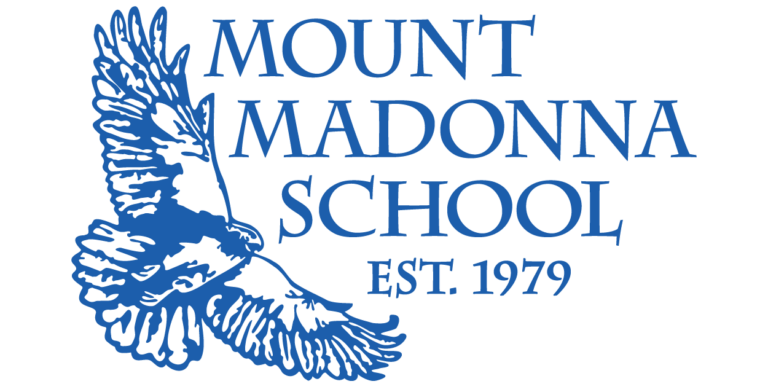By Supriya McDonald, Head of Lower School
Academic Excellence is one of the three main pillars of our School, together with Positive Character Development and Creative Self-Expression . Academic achievement is one of the five core values of an MMS education. These words are found in the mission statements of most schools, and also heard in political speeches during election season. But what does academic achievement and excellence look like at MMS? How do we demonstrate it and how do we measure it?
The numerical measure of academic success is often pin-pointed to standardized test scores comparing students and populations throughout the state, country or world. Standardized tests measure some forms of intelligence for comparisons between large groups of people. They do not predict individual success in college or life. They can help diagnose learning differences and gifts, and help determine if a skill set needs re-teaching. The CAIS/ WASC accreditation process involves taking these test scores into consideration as one metric of academic achievement – among a broad array of other evaluative tools. Our recent accreditation evaluation shows that MMS students are indeed achieving results at the level of other suburban independent schools across the nation. In fact, in both of our previous accreditation cycles, MMS was commended for students’ test score results and our academic program.
Research about the brain, memory and learning continues to confirm what teachers, parents, students and psychologists have known for many years: testing is just one demonstration of learning and can be affected by sleep, nerves, diet and confidence. Learning to take a test can be taught, and businesses thrive on the guarantee “increase your score 100 points or your money back!”
While watching the delightful presentations of our students in their “Journey with Eco-Heroes” performance one year, I began considering the learning that occurs during this process, and how it improves test scores and students’ academic performance. MMS’ five core values are: academic achievement, integrated learning, meaningful relationships, environmental stewardship and the creative process. All five enhance the learning of each student and increase their potential for academic success. The process of integrating the disciplines of social studies, science, language arts, visual arts, dance and music for our Cultural Awareness Assembly creates a powerful vehicle of direct learning experience that is evident in our students’ performances.
I have recently been inspired by three books on learning research: Brain Rules , Five Minds for the Future , and Born to Be Good. Below are some key points from authors John Medina, Howard Gardner and Dacher Keltner relating to our program design and correlating with our emphasis on Performing Arts as a way of boosting students’ academic achievement.
1. There are 9 types of intelligences (linguistic, logical-mathematical, musical, visual-spatial, interpersonal, intrapersonal, bodily-kinesthetic, naturalist and existentialist). The 5 kinds of minds predicted for success in the 21st century are: disciplined, synthesizing, creative, ethical and respectful.
MULTIPLE INTELLIGENCES: Students demonstrate their knowledge in various ways through song, dance, acting, and artwork, while working in groups and independently learning their parts for the group. Using all the modalities gives students ways to demonstrate their nine intelligences.
2. Through evolution, humans have been wired to learn using a variety of modalities and senses. We are made to explore, investigate and ask, “why?”
EXPLORATION: Their classroom study engages them in exploration, questioning, researching and reporting on, “Why are these concepts important to my life and understanding of the larger world?”
3. Confidence improves learning. Secure social relationships between children and adults increases confidence and learning aptitude.
CONFIDENCE: Teachers, students and parents form a collaborative team supporting students in overcoming their fear about public performance. Next to dying, research tells us that public speaking is the second most dreaded fear.
4. In order to develop our working and long-term memory, humans must repeat to remember and remember to repeat.
MEMORY: Learning lines, dance moves, listening for cues and learning the blocking are repeated over and over, exercising working memory.
5. Humans have a maximum average attention span of 10 minutes for factual information, after which time they become distracted unless new information is combined with a related narrative or emotionally-charged experience.
ATTENTION: Story and narrative are how humans have learned for generations, and the plays, scripts and literature used to teach concepts helps students understand at a deeper level, moving information into long- term memory.
6. Modeling behaviors and mirror neurons help us understand the behavior of others, affect positive change and cultivate empathy.
BEHAVIOR: Positive role models and inspirational heroes chosen for study inspire positive behavior. Acting out and embodying these models create impressions of positive ways of being with one another.
7. The more that learning can be multifaceted and related to direct experience, the more likely it is to be retained.
RETENTION: Raising awareness about a specific culture or idea creates memorable learning, because it engages the social, emotional, and intellectual realms, and is witnessed by the community as a shared experience to be remembered, photographed and talked about afterwards.
8. Humans need to move. Executive functioning (the part of the brain that helps solve math problems) increases with exercise. Movement increases the development of the brain and patterns of learning. The brain’s neural plasticity allows humans to be wired differently, and change their wiring if injured or a function of the brain is not working. Movement can help stimulate that growth and new pathways.
EXECUTIVE FUNCTIONING: Dance stimulates the mind and requires control, discipline, memory, concentration and sensitivity to others while moving in rhythmic time to music.
In summary, combining brain and social-emotional research with the practical application of learning at school, leads me to see how pretending in the elementary grades to be Henry David Thoreau, Wangari Matthai, Jacques Cousteau, a starfish, a macaw or an endangered animal, is really a great way to prepare for the SATs, strive toward academic excellence, and acquire the multifaceted variety of skills and interests necessary to build a successful life.
#####



